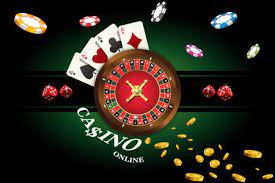In the realm of healthcare, the dichotomy between pharmaceutical care and traditional pharmacy practice delineates two distinct approaches to medication management. While both play pivotal roles in the dissemination of medications, the disparities in their methodologies and objectives are significant. Here, Estela Arco offers insights into understanding the contrasting dynamics of pharmaceutical care and traditional pharmacy:
Traditional Pharmacy: A Snapshot
The traditional pharmacy model hews closely to the conventional notion of a pharmacist’s role—primarily centered on medication distribution and dispensing. Within this paradigm, the pharmacist’s responsibilities revolve around filling prescriptions as per the physician’s directives. This practice predominantly fixates on the medicines themselves rather than the individuals who receive them.
In essence, traditional pharmacy confines itself to transactional interactions with patients. Pharmacists operating within this framework manage medication inventories, ensure accurate prescription fulfillment, and field routine inquiries from patients regarding their medications.
Pharmaceutical Care: A Holistic Approach
Pharmaceutical care, in stark contrast, represents a more contemporary and holistic perspective on medication management. It extends beyond the narrow confines of medication dispensing to prioritize patient outcomes and welfare. In this approach, pharmacists assume an integral role in enhancing overall patient health.
At its core, pharmaceutical care repositions the patient as the focal point of the pharmacist’s endeavors. It encompasses a comprehensive spectrum of responsibilities, including monitoring medication regimens, managing therapy plans, and actively engaging in patient counseling.
Key Distinctions Between Pharmaceutical Care and Traditional Pharmacy
Focus: The most conspicuous disparity between these two practices lies in their primary focus. Traditional pharmacy gravitates towards the medicines themselves, emphasizing the accurate dispensing of prescribed drugs. In contrast, pharmaceutical care adopts a patient-centric approach, placing paramount importance on the patient’s holistic well-being and health outcomes.
Responsiveness vs. Proactivity: Traditional pharmacy primarily assumes a reactive stance, responding to physicians’ prescriptions and fielding routine patient queries related to medications. Pharmaceutical care, on the other hand, adopts a proactive stance. Pharmacists actively assess patient conditions, continuously monitor the effectiveness of prescribed treatments, and collaborate closely with healthcare providers to ensure that patients receive the most optimal care possible.
Transactional vs. Personal: Traditional pharmacy interactions are generally transactional in nature, characterized by the straightforward exchange of medications for prescriptions. Pharmaceutical care, conversely, encourages a more personal and profound connection between pharmacists and patients. It redefines the pharmacist’s role, elevating them to the status of a trusted health advisor—a vital link in the healthcare continuum.
In conclusion, the demarcation between pharmaceutical care and traditional pharmacy practice underscores the transformative shift in the field of medication management. While both serve indispensable functions, pharmaceutical care emerges as a progressive and patient-centric paradigm, transcending the confines of traditional pharmacy. As Estela Arco emphasizes, understanding these distinctions is essential for healthcare professionals and patients alike, as it empowers individuals to make informed choices about their medication management and overall well-being.



